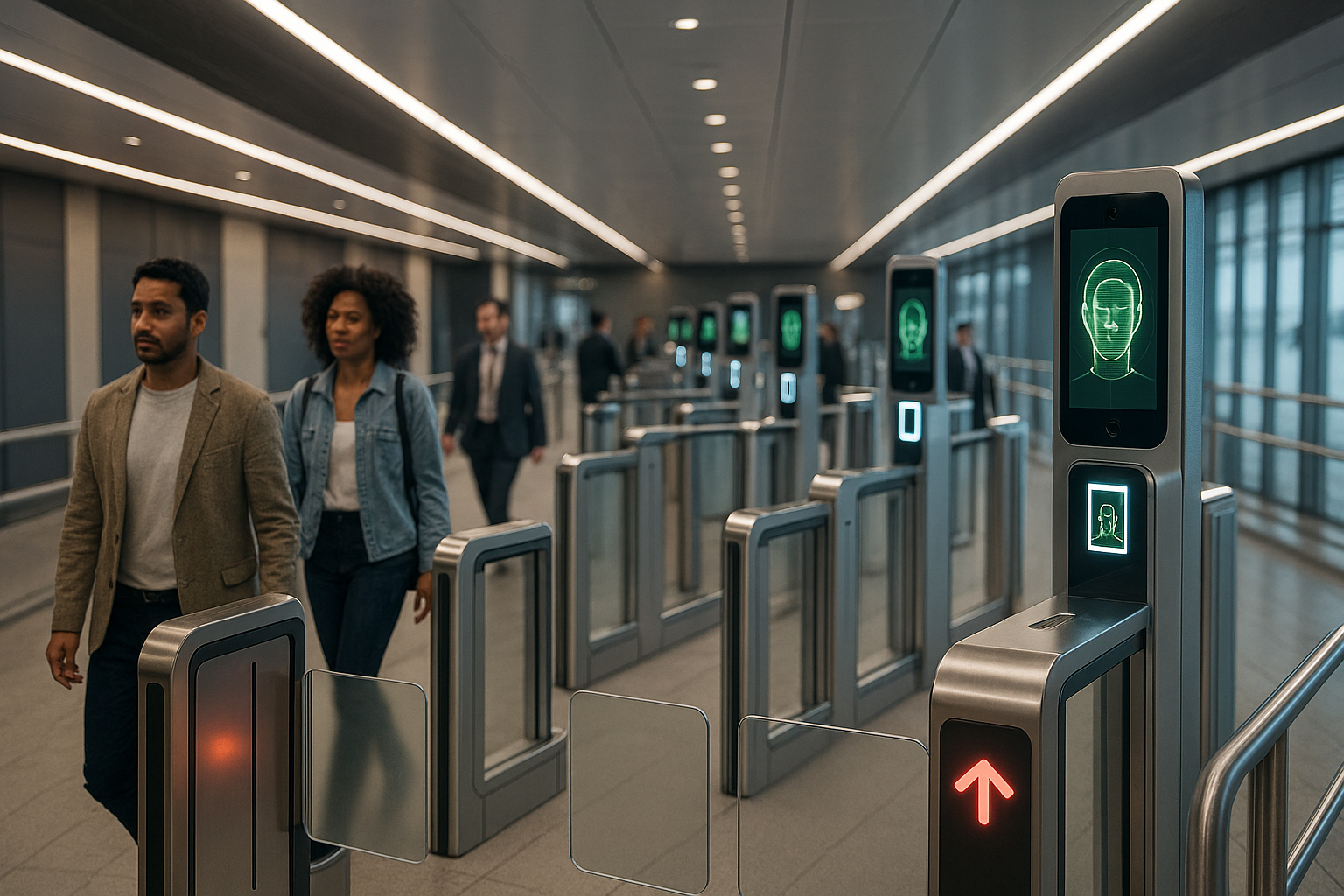How New Airport Tech Speeds Up Security Checks — and Raises Privacy Alarms
Introduction
The new airport tech revolution is here. From biometric e-gates to touchless facial ID systems, airports are integrating sophisticated automation to streamline security checks. While these innovations promise to reduce wait times and create smoother passenger flows, they also heighten concerns about privacy and data protection. This article explores what technologies are emerging, how they accelerate screening, and why privacy must remain central to their deployment.
Subheading 1: Biometric e-Gates and Touchless ID Systems
One of the fastest-growing examples of new airport tech is the deployment of biometric e-gates. Clear, a U.S. identity-verification firm, has begun piloting biometric e-gates at major airports—like Atlanta and Seattle—that let Clear Plus members skip traditional queues and head straight to TSA screening. The facial biometrics match IDs to boarding passes instantly, aiming to cut congested lines and friction for travelers.
Simultaneously, the TSA is rolling out “TSA PreCheck Touchless ID”—a touchless lane available at 15 airports—that leverages live facial scans to verify identities automatically, eliminating the need to present physical ID. This effort aims to refine throughput in overcrowded PreCheck lines.
Such new airport tech significantly trims processing times and eases bottlenecks—but they also spark debates over biometric data handling and surveillance potential.
Subheading 2: Invisible Checkpoints and Paperless Travel
Another bold direction for new airport tech is the development of invisible checkpoints or self-service screening kiosks. Companies are building supermarket-style self-screening booths that combine compact CT bag scanners, X-ray imaging, electromagnetic body scanners, and AI-based object detection to expedite the security process. Passengers simply place their belongings and proceed—officers only intervene when prompted by the system.
In parallel, airports like Abu Dhabi’s Zayed International are advancing “Smart Travel” systems that use facial recognition throughout checkpoints, lounges, duty-free shops, and boarding gates—eliminating the need for passports or physical IDs altogether. Full implementation is planned across multiple terminals by 2025.
Subheading 3: The Push for Digital Travel Credentials
Beyond facial technologies, the broader vision for new airport tech includes fully digital travel credentials. International aviation authorities are advancing digital travel credentials (DTCs)—secure, virtual versions of passports. Countries such as Finland, Canada, and Singapore are trialing paperless, biometric-enabled systems to accelerate travel and reduce touchpoints.
While these systems promise convenience and resilience, they also intensify privacy debates, especially regarding data ownership, encryption, and long-term storage.
Subheading 4: Speed vs. Privacy — The Trade-Off and Regulatory Pushback
The rapid rollout of new airport tech has triggered both praise and skepticism. Critics worry that widespread facial recognition erodes civil liberties and may normalize biometric surveillance. In response, lawmakers have introduced regulations like the Traveler Privacy Protection Act, which mandates that human ID checks be the default, with facial scans strictly optional and data deleted immediately after verification.
More recently, a Senate bill is under consideration to limit TSA’s biometric scope—requiring deletion of scans post-check and banning their use for surveillance or law enforcement purposes.
Conclusion
The era of new airport tech is unfolding. From biometric e-gates and touchless ID to self-screening booths and digital credentials, airports are embracing automation to boost efficiency and enhance traveler experience. Yet as these innovations spread, the privacy implications cannot be overlooked. Ensuring optionality, strict data deletion policies, and legal oversight will be essential to balancing convenience with civil liberties.
Travelers and policymakers alike must advocate for transparency and safeguards so that new airport tech delivers speed without sacrificing privacy—or freedom.




Comments are closed